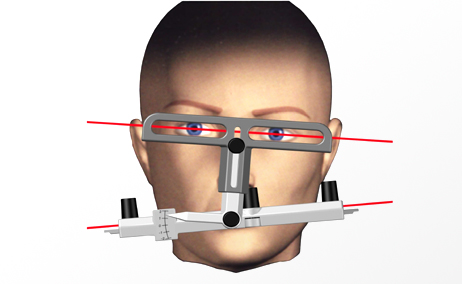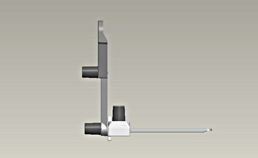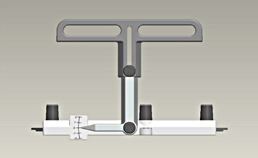Equipment designed to help the dentist communicate the patient’s correct aesthetic-occlusal-harmonic facial information to the dental technician.
Often the bipupillary line is naturally not parallel with the smile line, creating a disharmonious face. This causes a communication problem between the dentist and the dental technician when creating the prosthetic implant at an aesthetic and occlusal level. “Aesthetic line” is designed to help the dentist communicate the patient’s correct aesthetic-occlusal-harmonic facial information to the dental technician. The dental technician can therefore correctly reproduce the real facial situation of the patient in the laboratory using an articulator and follow the changes requested for the specific work.

INSTRUCTIONS FOR USE FOR THE DENTAL TECHNICIAN
How to use the “Aesthetic line” instrument:
– Cover the provided fork for the previously softened wax clamp. Insert the fork into the instrument, bringing it to the patient’s mouth to obtain a light imprint of the jaw and ask the patient to hold the fork in place.
– Loosen the two screws on the front of the instrument. The upper part shaped like glasses will be positioned at the height of the eyes and blocked using the upper vertical glide screws.
– Block the lower screws, positioning the bipupillary inclination.
Repeat the operation if necessary.
Once the bipupillary line is centered, the inclination of the front shaft will be obtained, with the arrow positioned on the graduated scale to the left of the operator (patient’s right), determining a precise measurement of the facial inclination.
– Take note of the data.
Please Note: it is possible to send only the fork with the data to the dental technician, or the entire system.







